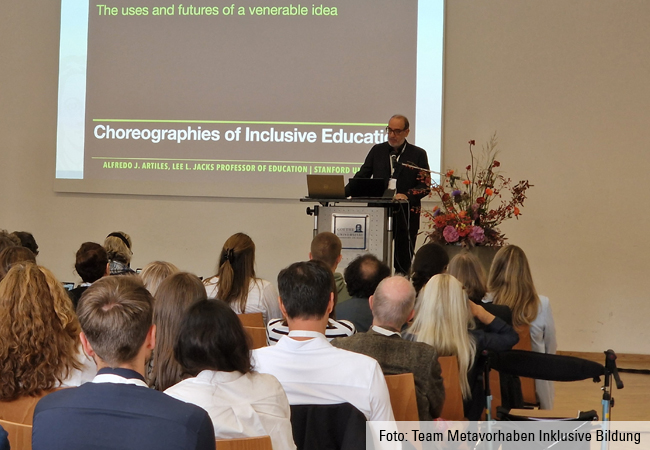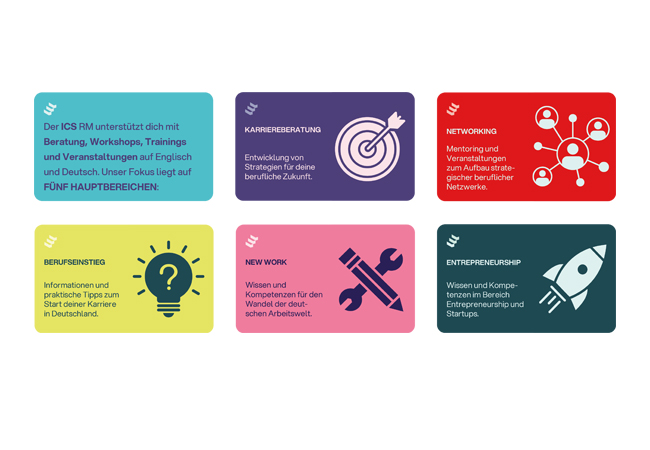Children discover the fascinating world of science: the “Junge Forscher” (“Young Scientists”) project of the Polytechnic Foundation of Frankfurt am Main and Goethe University arouses their interest in science and technology at an early age. Undergraduate and postgraduate students support the youngsters while gaining important communication skills.
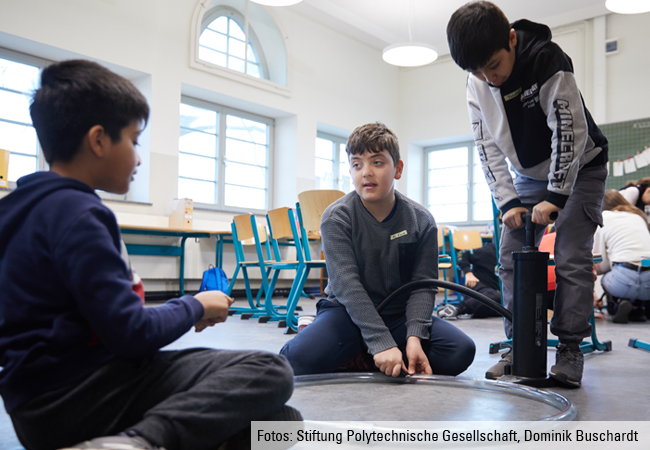
Everyone knows that it’s almost impossible to satisfy children’s curiosity. Of course elementary schools should cater to kids’ thirst for knowledge, but often they are unable to do so sufficiently owing to a lack of technical and teaching resources in the STEM subjects. This is where the “Young Scientists” project comes in. Its aim is for schoolchildren to meet scientists in person. Third and fourth-graders join the project for three days and are given an experimental introduction to computing, physics or biochemistry.
Three modules are now available for elementary schools. The “Small particles” module focuses on atomic physics, the “DNA and heredity” module focuses on biochemistry and genetics, and the newest module, called “Digital world,” is all about computers, programming and Artificial Intelligence. “Yes, these topics are quite complex, but they have been prepared especially for children,” stresses Annika Löffler-Djahani, a project leader in science, technology and vocational training at the Polytechnic Foundation. “All the modules that have been developed contain theoretical and experimental parts. It’s important that the schoolchildren can tackle the questions actively through play.” Löffler is absolutely delighted by the project days held so far. For instance, she was very impressed with the ideas for communicating the topic of DNA. “There’s a dressing-up game that shows which characteristics are inherited in humans. We use a red wig, a clown’s red nose and a tiger’s tail to explain to the children which characteristics reside on strands of DNA and are inherited. Another experiment consists of collecting DNA from inside the mouth on a cotton bud and making it visible simply by using a solution containing salts, sodium chloride and a bit of washing soda (sodium carbonate). That can make them really curious and they get very interested.”
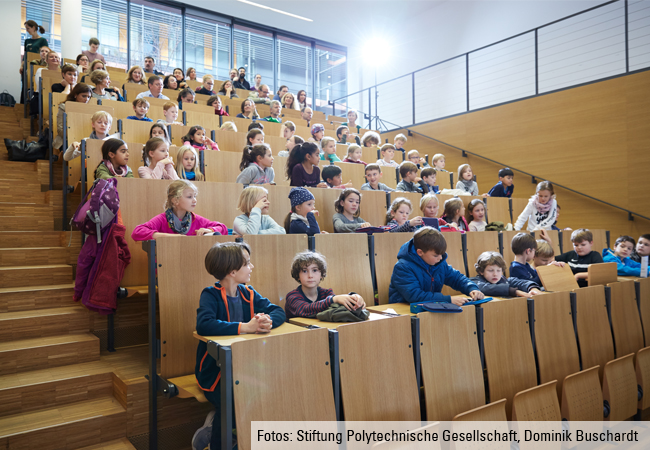
The mentors are all volunteers – undergraduate and doctorate students in science and technology. “As a rule, we find the mentors through our foundation’s extensive network. We ask our Main Campus scholars if any of them are interested in working on this project. Generally they’re science students, but sometimes we also get students from the humanities. After all, students of other subjects can also gain a good understanding of the subject matter and pedagogical methods.”
It is unusual how the mentors introduce themselves in advance of the project days. They write a letter to the class with an introduction to the topic. “That goes down really well; the children reply with their own letters containing a huge range of questions for the young researchers, which are then taken up during the project days.”
“I want to be a scientist too, when I grow up”
Joshua König, a doctoral student working with Prof. Henner Büsching at the Institute for Nuclear Physics, has already been involved with “Young Scientists – Small particles” for seven years, and now heads the university’s work on the module. The first school visit, according to König, consists of a theoretical look at the subject matter, which is no less exciting. “Each time it’s nice to see how fascinated and amazed the children are when they learn that everything around them is made up of atoms.” On the second visit he and the children build a particle accelerator together out of very simple, everyday objects: a garden hose, an air pump, balls and putty. “With the aid of the model we have built, the schoolchildren themselves can experiment and turn the classroom into a lab,” König says. The kids are then really excited when they get to visit Goethe University’s Riedberg science campus on the third day. König emphasizes that it’s fascinating to see how much the children remember from class: “They remember not only that atoms are the building blocks of matter but also how small they are, and sometimes they also remember that there are even smaller particles, like quarks.” Joshua König loves it when one of the children says something like, “I want to be a scientist too, when I grow up.” He says, “That really shows that this is a wonderful and unique experience for the children.” But he also stresses that both parties in the project benefit, and the students also find it an enriching experience. “We’re not only pleased to give the schoolkids an insight into ‘the world of minute particles’ – we’re also delighted to have the chance to expand our personal skills in scientific communication.”
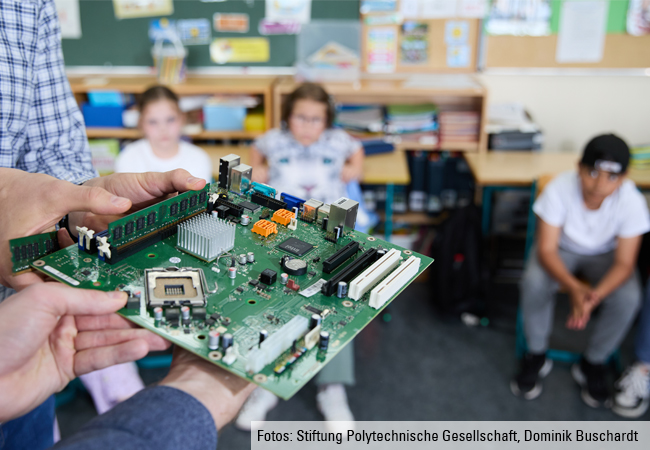
Bastian Stock is a mentor for the “Digital world” module. He’s studying Business Information Systems at the Frankfurt University of Applied Sciences, and in the “Young Scientists” program he shows the kids the basics of computer science and Artificial Intelligence. “The children learned what a computer is through hands-on activities – we took a PC apart and identified the hardware components. The second day deepened their understanding through playful programming exercises with micro:bits, which are mini-controllers fitted with various sensors and inputs, e.g. buttons, LEDs, motion sensors and midi-loudspeakers, and which can be controlled in fun ways with programs created especially for the purpose.” Stock also sees his participation in the project as an extremely enriching personal experience, and says: “It was an opportunity to pass on my knowledge, and to learn a lot myself and to discover the world anew through the eyes of the children. Interacting with the young researchers has shown me how important it is to promote an understanding of technology at an early age and to inspire the next generation.” Stock also reports that the teachers were delighted and very supportive; they had the highest praise for the program and are keen for it to be continued.


